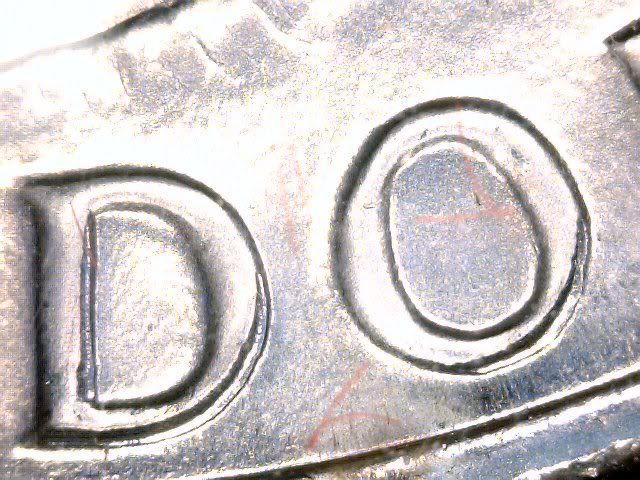Would you say these are double dies?
I think they are but I always seem to have trouble spotting them.
The first is a 71 proof Ike and the second a 1969 S in a mint set, thanks for the help with my continuing education into a new area of collecting for me.


The first is a 71 proof Ike and the second a 1969 S in a mint set, thanks for the help with my continuing education into a new area of collecting for me.


Support your local gunslinger, you never know when you'll need him
0
Comments
Al
The easy way to tell on both of them is the shelf like flat look. Also the second hit took away metal from the normal devices, notice that the normal devices get thin where the shelf takes away from the normal width.
BS&T
Ebay: + <waitin'> NEG: Chameleoncoins
NonBST/Ebay:
WTB: Toners, BU Darkside, Sovs & 20 Mark, LMU/SMU Gold.
Look at the "corners" (anywhere it comes to a point) of the letters, that is where the seperation would take place. If it appears like one letter was laid over the top of another but was shifted slightly then you are in the realm of having a doubled die coin.
For Ike dollar coins I use "The Authorative Reference on Eisenhower Dollars" by Wexler, Crawford and Flynn, it has many wonderful images of DDO and DDR coins which helped me to start noticing where to look for PUPs (Pick Up Points).
V/R
Sumdunce
<< <i>Thanks for the info, still a confusing area of collecting to me but in time I hope to be able to spot the difference Thanks----- Tom >>
For Ikes,
Machine Doubling:
Die Doubling:
There must be "clear" separation between the letters of devices.
The name is LEE!
For modern coins made by the single sqeeze hubbing and older coins with class 6 doubled dies you should also look for wide or distorted devices.
Here's a few examples of class 9 doubled dies (class 9 are on ones made with modern single squeeze coins) where you will not see separation but they are doubled dies:
Class 6 doubled dies (distended hub doubled dies) can be older (pre single squeeze), look for wide distorted letters: